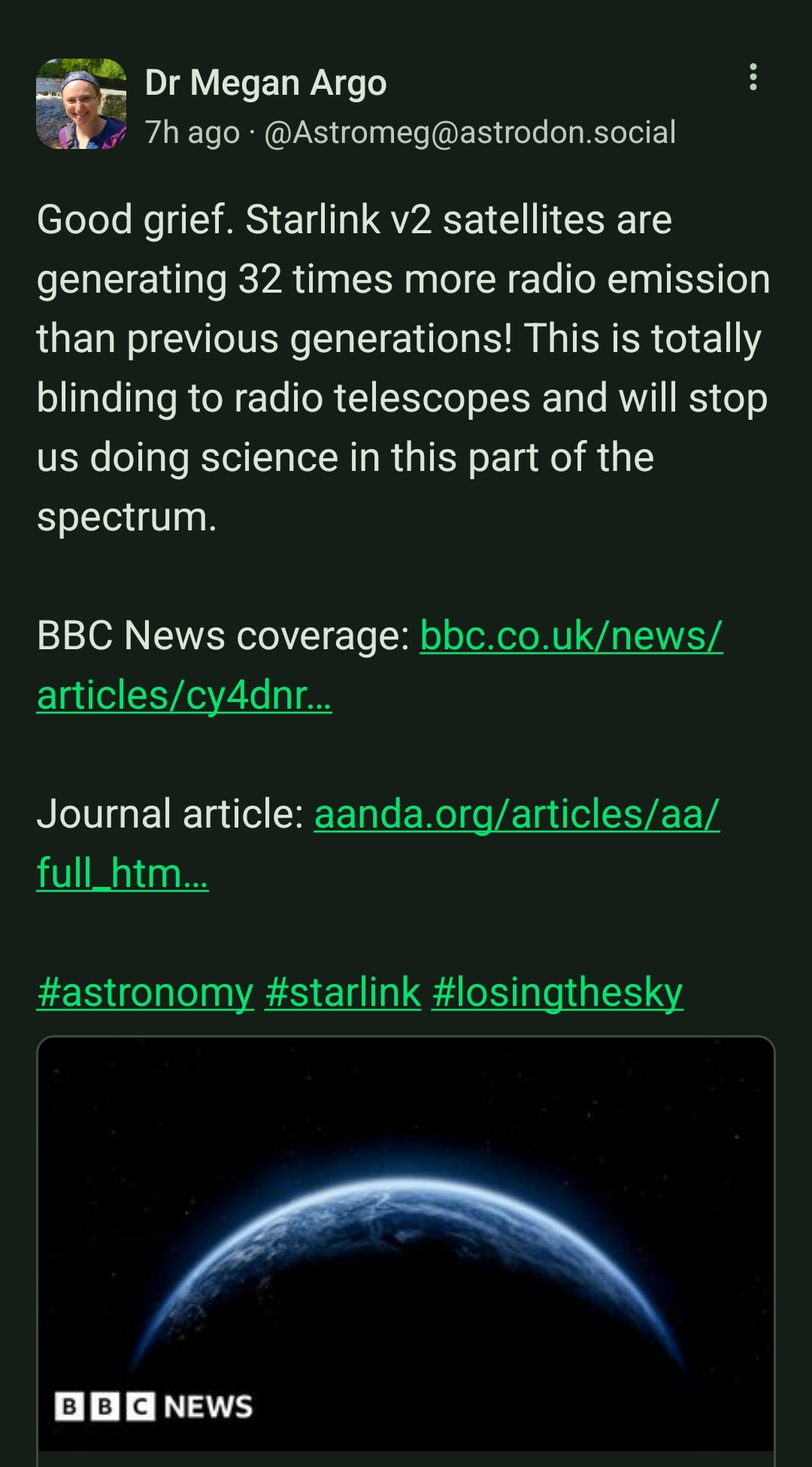this post was submitted on 18 Sep 2024
1220 points (97.4% liked)
Microblog Memes
5742 readers
2881 users here now
A place to share screenshots of Microblog posts, whether from Mastodon, tumblr, ~~Twitter~~ X, KBin, Threads or elsewhere.
Created as an evolution of White People Twitter and other tweet-capture subreddits.
Rules:
- Please put at least one word relevant to the post in the post title.
- Be nice.
- No advertising, brand promotion or guerilla marketing.
- Posters are encouraged to link to the toot or tweet etc in the description of posts.
Related communities:
founded 1 year ago
MODERATORS
you are viewing a single comment's thread
view the rest of the comments
view the rest of the comments

The geosynchronous satellites are about ~~650~~ 65 times higher than Starlink satellites, so the speed of light is a significant limiting factor.
Geosynchronous orbit is 35,700 km (3.57 x 10^7 m) above sea level. At that distance, signals moving at the speed of light (3.0 x 10^8 m/s) take about .12 seconds to go that far. So a round trip is about .240 seconds or 240 milliseconds added to the ping.
Starlink orbits at an altitude of 550 km (5.5 x 10^5 m), where the signal can travel between ground and satellite in about 0.0018 seconds, for 3.6 millisecond round trip. Actual routing and processing of signals, especially relaying between satellites, adds time to the processing.
But no matter how much better the signal processing can get, the speed of light accounts for about a 200-230 millisecond difference at the difference in altitudes.
Thanks! That's the shit for which I come to Lemmy. Genuinely, thank you.
I work in broadcast communications and we use geosync link ups all the time for various shit. I'm pretty sure I know more about satellite communications than a normie, but I'm blind to the intricacies of use case when it comes to stuff like this.